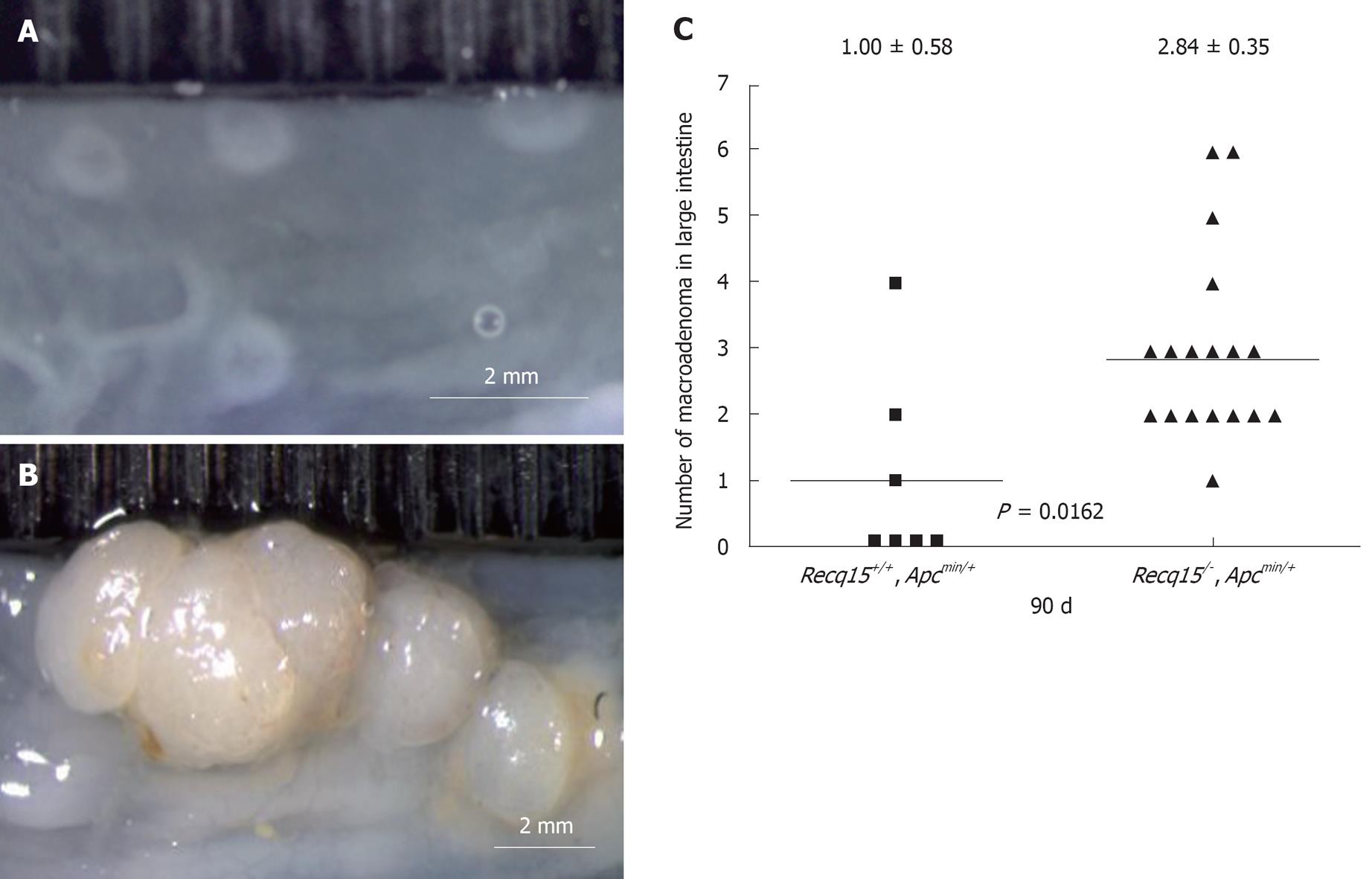Copyright
©2010 Baishideng.
World J Gastroenterol. Mar 28, 2010; 16(12): 1482-1486
Published online Mar 28, 2010. doi: 10.3748/wjg.v16.i12.1482
Published online Mar 28, 2010. doi: 10.3748/wjg.v16.i12.1482
Figure 1 Effects of Recql5 deficiency in the development of intestinal adenomas in the ApcMin/+ mice.
Recql5+/+ApcMin/+ and Recql5-/-ApcMin/+ mice were monitored and sacrificed at 90 d of age. A, B: Representative microscopic images of sections from the ileum of a Recql5+/+ApcMin/+ (A) and a Recql5-/-ApcMin/+ (B) mouse. A microadenoma (diameter < 1 mm, short arrows) and a macroadenoma (diameter ≥ 1 mm, long arrows) are indicated in (A, B); C, D: Multiplicity of macroadenomas (C) and microadenomas (D) in the intestine of individual mice at 90 d of age. Mean and SE are also shown at the top of each column. Each data point represents the total number of macroadenomas (C) or microadenomas (D) in a single mouse.
Figure 2 Effects of Recql5 deficiency in the development of colonic adenomas in the ApcMin/+ mice.
A, B: Representative images of sections from the colon of a Recql5+/+ApcMin/+ (A) and a Recql5-/-ApcMin/+ (B) mouse. Note that A and B are shown at different magnifications. B is shown at a lower magnification in order to show a similar whole view of the interior of the lumen that was significantly enlarged by the presence of the multiple tumors; C: Numbers of colon macroadenomas. The horizontal bars indicate the mean numbers of adenomas in each population. Mean and SE are also shown at the top of each column. Each data point represents the total number of colonic tumors in a single mouse.
-
Citation: Hu Y, Lu X, Luo G. Effect of Recql5 deficiency on the intestinal tumor susceptibility of
Apcmin mice. World J Gastroenterol 2010; 16(12): 1482-1486 - URL: https://www.wjgnet.com/1007-9327/full/v16/i12/1482.htm
- DOI: https://dx.doi.org/10.3748/wjg.v16.i12.1482










